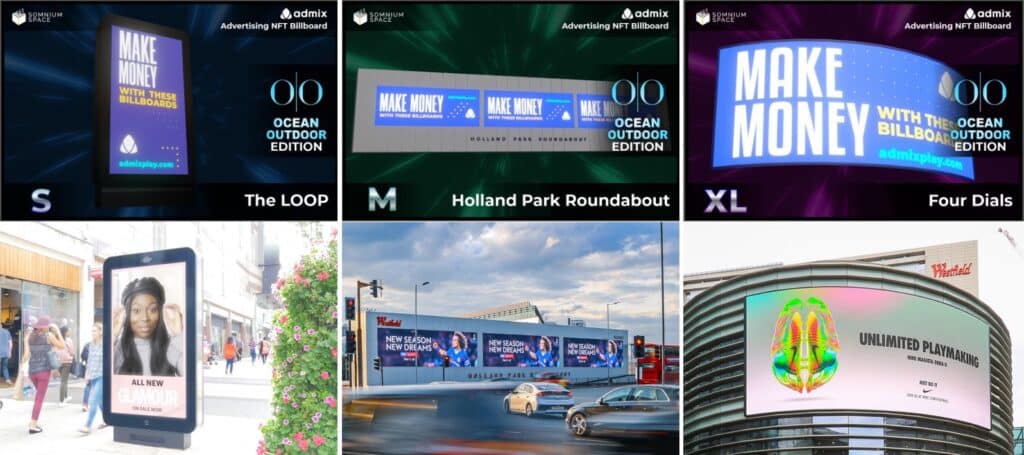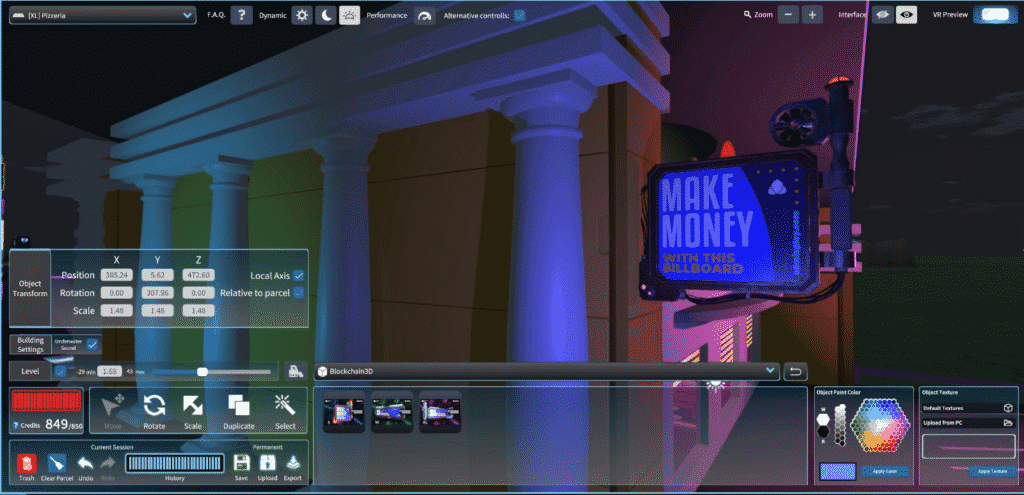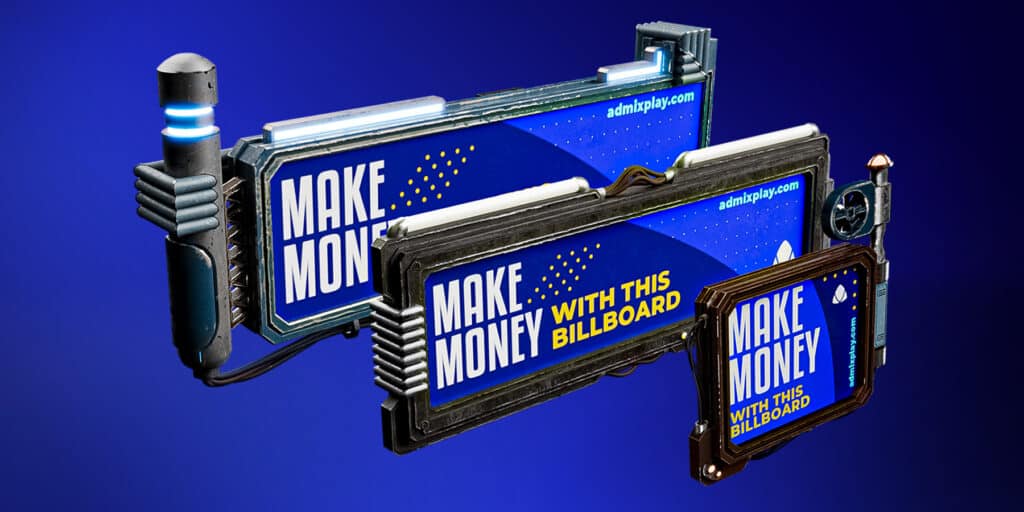In this interview, Tom Sargent, who is head of growth at Admix, explains how Admix is experimenting with the use of NFTs for advertising. He also outlines an advertising model where NFTs enable brands to reach metaverse users and parcel owners from their virtual lands.
Jonas Kasper Jensen (JKJ): Thank you for joining me in this conversation about advertising and NFTs. To begin with, can you tell us what Admix is?
Tom Sargent (TS): Yeah, certainly. Admix started in 2017 as a technology solution to the intrusive advertising that you get in video games. It was built by people who understood the advertising world and were frustrated with the nature of advertising in video games, particularly on mobile. We’re all aware of those popups that interrupt the games when you have to wait for the little X to appear in the corner and close it out, which is not a very good way of playing a game. It interrupts the flow of the experience.
Admix’s solution was to start providing a drag and drop tool that lets game developers put advertising space and advertising real estate directly into the game environment. Much like you see in the real world. Like billboards alongside race tracks in racing games. In games such as GTA, billboards and advertisements can be implemented in cities where the ads are actual real-world ads, and it connects to our platform. This allows brands and advertising agencies to bid for creative space within these games, much as they would bid for the ability to appear on someone’s Instagram feed or a LinkedIn ad. So pretty much the same solution, but the output is a billboard somewhere in a 3D environment.

JKJ: Does Admix work with NFTs, and what relation does Admix have to NFTs?
TS: Over the last year, we’ve taken steps into many of the technologies associated with web3, NFTs being one. We have started to apply it to virtual worlds within the metaverse and started to look at new technologies that we can bring to the world of advertising, such as NFT powered advertising. NFTs enable us to share our technology with everyone and create a source of passive income for those that hold them. We are also encouraging brands to escape the billboards, the static boxes that are just a flat surface. One of our core beliefs is that we don’t want advertisements to impact the gaming experience. With NFTs and other web3 technology, advertising can become much more than just a catchy slogan. Users can, for example, interact with the brands to play a mini-game with burgers or test-drive a virtual car. And in this way advertisement becomes much more part of the experience.
So, that’s where admix is at the moment. And we work to help brands move into this web3 world, move into the metaverse.
JKJ: Can you give a specific example of advertising technology and NFTs?
TS: When it comes to NFTs, we’ve seen a unique opportunity to make sure that the designers, the 3D modellers, and the builders are benefiting. A good example would be creating NFT billboards with different themes. That could for example be Cyberpunk themes, cartoon themes and fantasy themes. We sell the billboards with our technology applied as NFTs. The NFT owner, once they purchase it, can then plunk that billboard down in Decentraland or Sandbox or Somnium Space or whatever virtual world. And then it becomes registered as an available piece of real estate that adverts can advertise on.
Companies like McDonald’s or Burger King can place their ads in these virtual worlds. And the revenue generated goes to the NFT holder. Admix takes a small cut, but most of the revenue generated is handed back to the asset creator, the NFT owner, and the landowner – up to 90%. It’s about creating another source of passive income for the creators that are ultimately the powerhouses behind the metaverse.

JKJ: So if I’m a user, and I enter a virtual world and see an advertisement, this advertisement will be an NFT that has been integrated into the parcel that I am looking at. And the owner of the parcel will get passive income from the revenue earned when I look at the ad?
TS: Exactly, for those that are NFTs. Every time a user looks at that billboard and sees the advertisement, the advertiser who created the ad gets charged a certain amount of money, a couple of dollars, and those dollars are sent to the NFT owner via crypto into their wallet. So if you place it in Somnium Space virtual world, you get paid in the world’s crypto $CUBE. If you place it in Decentraland, you get paid in $MANA. Whatever token the world is using.
It’s kind of like owning a piece of digital real estate. We talk a lot about owning virtual land at the moment. This is the development of the infrastructure on the land that the people own, and when people interact with that development, that is what generates the income for the parcel owner.
Much like in the real world. The analogy of landowner, developer, and landlord illustrates how it works in the virtual world.
JKJ: How do you envision the future of NFTs in advertising, and what do you expect to see from NFT technology?

TS: First, we want to create a digital reflection of certain aspects of the world. So, a good example is the work we did with Ocean Outdoor, one of the UK’s biggest out of home advertisers. For instance, they own those big, shiny screens on Piccadilly Circus and around the IMAX. And we wanted to make a digital twin so that when the advertisers
start a new campaign, it can be broadcast across Piccadilly Circus in the real world, the same should happen in the virtual world.
So the advertiser gets access to an audience of everybody that passes Piccadilly Circus, but they also get this new virtual audience of global eyeballs that they can tap into with the digital twin of a billboard. We would love to do the same with the billboards in Times Square, the Eiffel Tower and other landmarks around the world. With the virtual twin, the real world and the virtual world come together in real-time.

JKJ: In what other ways do you think one could incorporate NFTs into the metaverse?
TS: We’re looking at many ways to bring a much more innovative mindset when it comes to creating adverts. Over the last few years, due to the birth of social media, many adverts have been very specifically designed to match one demographic and one geography, for example, and they’re tailored to that.
When we move into the virtual world and web3, the boundaries become blurred. We’re trying to help brands prepare for how to represent a broad enough spectrum of not just people. There will be all kinds of entities in this virtual world that need to be accounted for. And the way people identify themselves is going to be very different, and brands need to start preparing for how they’re going to acknowledge that.
Read other stories: Korea’s Blockchain Tech Firm HUAPAYX to Bridge Digital Assets and Real Economy



